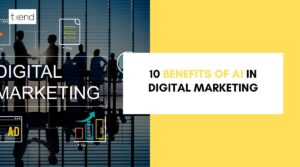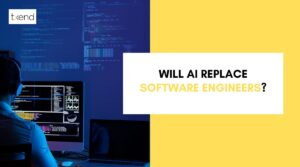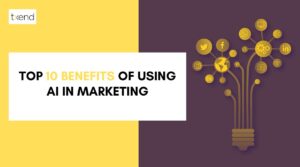Txend
Welcome to our latest newsletter! We’re thrilled to have you on board. In this edition, we’d like to introduce you to Txend, a dynamic company dedicated to innovation and excellence. Explore more about us at Txend and discover the exciting world of possibilities we’re creating.
We’re excited to announce a milestone for Txend as we gear up to participate in the upcoming Gitex Global conference, set to take place from October 16th to 20th in the vibrant city of Dubai.
Gitex Global promises to be an immersive experience, bringing together the world’s leading Fintech and AI companies for meaningful partnerships and collaborations.

At this prestigious event, Txend will be represented by our esteemed leadership team, who are the driving force behind our innovation and success:
- Omer Khawaja – Chief Executive Officer (CEO): Omer’s visionary leadership has guided Txend towards pioneering solutions in the Fintech and AI sectors.
- Usman Khawaja – Chief Operating Officer (COO): Usman brings a wealth of operational expertise to the forefront, ensuring the seamless execution of our strategies and initiatives.
- Danish Siddiqui – Director of Engineering: Danish’s technical acumen and leadership in engineering have been pivotal in developing cutting-edge technologies at Txend.
As we gear up to present our latest innovations and embark on exciting collaborations at Gitex Global, we welcome you to stay tuned for updates from this momentous event.
It’s an opportunity for us to connect with industry leaders, share insights, and chart a path toward a future of transformative possibilities in Fintech and AI.
We look forward to sharing our journey with you and bringing you the latest insights from this influential conference in Dubai. Stay connected, and let’s embark on this exciting chapter together!
Moreover, The Txend Townhall 2023, held on August 25th, wasn’t just an ordinary office meeting; it was a vibrant ignition of ideas, a nurturing ground for growth, and a blueprint for tomorrow’s success. You can catch a glimpse of the energy here.
Transparent communication was the cornerstone of this event, ensuring every team member was well-informed about our company’s direction.
Alongside the strategic discussions, we celebrated the birthdays of a few cherished employees and acknowledged the outstanding contributions of our best performers.
This gathering exemplifies our commitment to unity, determination, and a shared vision for the future. Together, we’re scripting the success story of Txend, fueled by collaboration, innovation, and a collective sense of purpose.
At Txend, fostering a vibrant work culture is a priority; our recent events truly reflect that spirit. In July, we embraced “Mango Mania” (Check it out here), where our team came together for a tropical treat, reinforcing the importance of teamwork in a fun-filled atmosphere.
August marked our celebration of cultural diversity with “Azadi Celebration” (See it here). It was a vibrant showcase of inclusivity, honoring Pakistan Independence Day, and underlining our commitment to embracing various cultures within our Txend family.
Latest Upgradation In Technology

AI and Robotics
Artificial intelligence (AI) and Robotics are two rapidly developing technologies that significantly impact our world. AI encompasses machine learning and decision-making abilities, while robotics focuses on creating autonomous task-performing machines.
Robots that can carry out activities that were previously thought to be impossible can be created using these two technologies.
AI-powered robots are already used in various industries, including manufacturing, healthcare, and customer service. They are also being used in military applications and space exploration. As AI and robotics develop, we can expect to see even more amazing things from these technologies.

Future Scope of AI and Robotics:
The future scope of AI and Robotics in the US market is poised for remarkable growth and transformation. With technology advancing at an unprecedented pace, these sectors are poised to assume pivotal roles across diverse industries.
In healthcare, AI-driven diagnostics and robotic-assisted surgeries are enhancing precision and patient outcomes. In manufacturing, robots are revolutionizing production lines, increasing efficiency, and reducing costs.
AI-powered chatbots and virtual assistants are reshaping customer service and support, providing 24/7 assistance.
Moreover, the automotive sector is witnessing the emergence of self-driving vehicles, while in agriculture, AI-driven systems are optimizing crop management. The financial industry benefits from AI’s predictive analytics to detect fraud and streamline financial operations.
The US military also explores AI and robotics for autonomous drones and advanced battlefield technologies. Additionally, AI algorithms are increasingly integrating into decision-making processes, from urban planning to climate change mitigation.
The US market embraces AI and robotics, fostering a fertile ground for innovation, job creation, and economic growth. However, ethical and regulatory considerations will be crucial in shaping the future, ensuring responsible and safe integration.
The US market’s future with AI and robotics holds boundless possibilities, transforming industries and enhancing the quality of life while posing challenges that demand thoughtful solutions.
How AI and Robotics Transform US Industries?
Artificial Intelligence (AI) and Robotics are ushering in a transformative era across various industries in the United States. These technologies are enhancing efficiency, productivity, and innovation, leading to significant changes in the business landscape.
Manufacturing:
AI-driven robots are revolutionizing manufacturing processes. The Industrial Robotics market is forecasted to attain a revenue of approximately US$632.20 million by the year 2023.
It is expected to manifest an annual growth rate (CAGR 2023-2028) of 2.51%, ultimately reaching a market volume of around US$715.60 million by 2028.
Industrial robots assume a vital function in automating manufacturing processes, overseeing numerous fundamental operations across various industries.
Healthcare:
AI is enabling more accurate diagnoses and personalized treatment plans. In 2022, the estimated worldwide market size stood at approximately USD 15.1 billion.
Forecasts indicate that by 2030, it is expected to surpass USD 187.95 billion, reflecting a robust compound annual growth rate of 37% during the forecast period from 2022 to 2030. AI applications span radiology, drug discovery, and remote patient monitoring.
Finance:
AI is enhancing fraud detection, algorithmic trading, and customer service. In 2020, 62% of financial institutions in the US were already using AI for risk management, and this adoption is expected to grow further.
Retail:
AI-driven chatbots, recommendation systems, and inventory management are improving customer experiences.
The anticipated expansion signifies a shift from USD 7.30 billion in 2023 to reach USD 29.45 billion by 2028, reflecting a substantial compound annual growth rate (CAGR) of 32.17% within the forecast period spanning from 2023 to 2028.
Transportation:
Self-driving cars are reshaping the automotive industry. Waymo, a subsidiary of Alphabet, has already launched a commercial self-driving taxi service.
The US Autonomous Car Market is currently evaluated at approximately USD 12.27 billion in 2023, with projections indicating an ascent to USD 31.17 billion by 2028.
This growth is anticipated to manifest through a noteworthy compound annual growth rate of 20.50% within the forecast duration spanning from 2023 to 2028.
Agriculture:
AI-powered precision agriculture is optimizing crop yields and reducing resource wastage. In 2022, the artificial intelligence (AI) market within the agriculture sector was valued at USD 1.7 billion.
The market is set for substantial growth, with an estimated compound annual growth rate exceeding 20% between 2023 and 2032.
This expansion is propelled by rising demand for agricultural robots, heightened consumer expectations, and the pressing need for improved crop yields.
Customer Service:
AI-driven virtual assistants handle routine queries, freeing up human agents for complex tasks. In 2022, the worldwide chatbot market was assessed at $4.7 billion.
Forecasts suggest an escalation from $5.4 billion in 2023 to $15.5 billion in 2028, showcasing a notable compound annual growth rate of 23.3% over the forecasted interval.
Energy:
AI is improving energy grid management and renewable energy integration. The AI sector in the energy and power domain is poised for significant growth, characterized by a compound annual growth rate of 24.68%.
This growth will take the market from its 2021 valuation of US$3.103 billion to a projected US$14.527 billion by 2028.
Military:
AI and robotics are driving innovations in defense, from autonomous drones to advanced cybersecurity.
The AI in Military Market is anticipated to have an estimated value of US$9.2 billion in 2023, and it is poised for growth, expected to attain US$38.8 billion by 2028.
This growth is predicted to occur at a substantial compound annual growth rate of 33.3% during the period from 2023 to 2028.
These statistics underscore the pervasive impact of AI and robotics across sectors. As these technologies develop further, they will open up new possibilities and pose fresh difficulties. The US is at the forefront of this transformative wave, poised to maintain its leadership in innovation and adoption.
The future holds even greater promise. According to projections, artificial intelligence (AI) is expected to add $15.7 trillion to the overall economy by 2030, with the US being a major factor in this increase. However, ethical considerations, regulatory frameworks, and workforce reskilling will be crucial in ensuring responsible and sustainable integration. As AI and robotics evolve, their potential to reshape industries and improve the quality of life in the US remains vast and dynamic.
Fintech: Revolutionizing Finance in the Digital Era
In today’s rapidly evolving financial landscape, the term “Fintech” has emerged as a beacon of innovation and transformation.
Fintech, short for Financial Technology, represents a dynamic fusion of finance and technology that is revolutionizing the way we manage, invest, and transact with money.
This section of our newsletter delves into the profound impact of Fintech, where cutting-edge technologies are rewriting the rules of traditional financial services.
From digital wallets to AI-driven solutions, we explore how technology is not just changing the game but redefining it, providing new avenues and opportunities in the digital era.

Fintech Market Analysis:
The Fintech sector is experiencing explosive growth. In 2021 the global mobile payment transaction value exceeded $1.5 trillion, with a projected CAGR of 12.7% from 2021 to 2026. The cryptocurrency market capitalization soared beyond $2.5 trillion, indicating a significant shift in financial paradigms.
Digital Wallets: The Future of Payments in the USA
Digital wallets are ushering in a cashless revolution in the USA, offering unmatched benefits and convenience. They enable seamless transactions, putting payment power at your fingertips.
With robust security measures, digital wallets ensure your financial data stays safe. Their accessibility across devices means you can pay, shop, and manage your finances anytime, anywhere.
In this digital era, these wallets are not just changing how we pay; they’re shaping the future of finance, making everyday transactions more secure, swift, and hassle-free.
How Fintech is Harnessing the Power of Artificial Intelligence?
In the dynamic realm of Fintech, where innovation and technology converge to transform finance, software engineers in the United States are positioned at the vanguard of this revolutionary shift. AI is driving automation, streamlining processes, and offering predictive analytics that empower better decision-making.
But its true magic lies in personalization. AI tailors financial services, making them uniquely suited to individual needs, from investment advice to lending solutions.
As Fintech continues to evolve, AI’s role as an enabler of efficiency, insight, and personalized financial experiences is revolutionizing the way we bank, invest, and manage our money in this digital era.
Blockchain’s Role in Fintech
Blockchain technology is catalyzing a transformation in Fintech across the United States. This revolutionary technology is fundamentally enhancing security, transparency, and trust within financial applications.
Blockchain safeguards sensitive financial information by ensuring data integrity and fortifying cybersecurity protections through the provision of an immutable record of transactions.
Moreover, its transparent and decentralized nature fosters trust among users and institutions alike, reducing the need for intermediaries.
In essence, blockchain is redefining how financial transactions are conducted, instilling a new era of confidence and efficiency in the digital finance landscape
Cost Considerations in Fintech App Development
When venturing into Fintech app development in the United States, understanding the cost dynamics is essential. Several factors influence these costs, such as complexity, features, and technology stack.
It’s crucial for businesses to have a clear grasp of these factors to make informed decisions about their development projects.
For a comprehensive guide on estimating costs in 2023, we recommend reading our article, “How Much Fintech App Development Costs In 2023? Complete Guide”, which delves into the specifics, ensuring you’re well-prepared for your Fintech app journey.
Ethical Considerations For Software Engineers
Software engineers who work for the United States find themselves at the vanguard of revolutionary change in the dynamic world of Fintech, where creativity and technology intersect to revolutionize the financial landscape.
While the possibilities seem boundless, they also carry significant ethical responsibilities. Let’s delve into some key ethical considerations that should guide software engineers who work for the USA as they navigate this transformative era.

Data Privacy and Security:
In an age where data is currency, software engineers must prioritize the privacy and security of user information.
The collection, storage, and transmission of sensitive financial data demand rigorous protection against breaches and unauthorized access.
Engineers must adhere to stringent security standards and continually update systems to stay ahead of evolving threats.
Fairness and Bias
Algorithmic decision-making is at the heart of Fintech applications, from lending to investment recommendations.
Engineers must be vigilant in addressing biases that can creep into these algorithms, inadvertently discriminating against certain demographics.
Ethical software design should ensure fairness, transparency, and equitable access to financial services for all.
Transparency and Accountability:
The opaque nature of some Fintech algorithms can erode trust. Software engineers should prioritize transparency, making it clear to users how decisions are made.
Additionally, building mechanisms for accountability is essential. Users should have avenues for recourse and understanding when something goes wrong.
Regulatory Compliance:
Fintech operates within a heavily regulated financial landscape. Software engineers must be well-versed in financial regulations, ensuring that their solutions comply with local and federal laws.
Navigating this complex regulatory environment ethically is paramount to avoid legal repercussions.
Financial Literacy:
While Fintech innovations empower users, they can also overwhelm with complexity. Engineers should consider how their designs promote financial literacy and responsible use of financial tools.
Providing educational resources within apps can be an ethical choice to ensure users make informed decisions.
Inclusivity and Accessibility:
Fintech should not leave anyone behind. Engineers must consider the needs of all users, including those with disabilities.
Creating accessible interfaces and ensuring that no one is excluded from the benefits of Fintech is an ethical imperative.
Environmental Impact:
As Fintech systems grow in scale and complexity, their environmental impact can become significant. Software engineers should consider sustainable practices in data centers and energy consumption, aiming for a greener, more environmentally responsible Fintech ecosystem.
Social Responsibility:
Beyond legal compliance, software engineers should embrace social responsibility. Fintech can empower underserved communities and drive financial inclusion. Engineers should actively seek ways to bridge economic disparities and enhance social well-being.
In conclusion, software engineers in the USA are pivotal in the Fintech revolution. While technical expertise is crucial, so is ethical mindfulness. By embracing these ethical considerations, engineers can ensure that Fintech innovations not only transform finance but also uphold values of fairness, transparency, and inclusivity, thereby contributing to a more equitable and responsible financial future for all.
Choosing the Right Development Partner in the USA: A Comprehensive Guide
In today’s fast-paced world, businesses constantly seek ways to stay competitive and innovative. One strategic approach that many companies adopt is outsourcing software development.
Outsourcing offers access to a specialized talent pool, reduces development costs, and allows businesses to focus on their core competencies.
However, selecting the right development partner is paramount to the success of any outsourcing venture.
Seek a collaborator with a demonstrated history of successfully completing projects that align with your specific needs.
Experience Matters:
One of the first and most crucial factors to assess is the development partner’s experience. How long have they been in the industry, and what kind of projects have they undertaken?
Seek a partner with a demonstrated track record in delivering projects akin to your requirements. Their experience should align with your industry, technology stack, and project scale.
Technical Expertise:
Evaluate the technical skills of your potential partners. Do they possess the expertise required for your project?
Assess their proficiency in programming languages, frameworks, and tools relevant to your development needs. A strong technical foundation ensures the successful execution of your project.
Portfolio and References:
Review the partner’s portfolio of past projects. This provides insights into the quality of their work and the diversity of industries they have served.
Additionally, don’t hesitate to request references from previous clients. Speaking with these references can offer valuable insights into the partner’s reliability, communication, and project management capabilities.
Communication and Collaboration:
Ensure that your potential partner has a clear and open communication channel.
Assess their responsiveness and willingness to collaborate. Working seamlessly across time zones and cultures is a significant advantage.
Project Management and Methodology:
Inquire about the development partner’s project management approach. Are they using established methodologies like Agile or Scrum?
A well-defined project management process ensures transparency, accountability, and the timely delivery of milestones.
Scalability and Resources:
Consider the scalability of your development partner. Can they accommodate changes in project scope or scale up resources as needed?
A flexible partner can adapt to your evolving needs without compromising project quality.
Quality Assurance and Testing:
Robust quality assurance and testing processes are vital to delivering bug-free software.
Confirm that your collaborator possesses a robust testing system in place for detecting and addressing issues throughout the entirety of the development process.
Cost and Budgeting:
Cost is undeniably a critical factor in any outsourcing decision. However, it’s essential to strike a balance between cost-effectiveness and quality.
Although it may be enticing to choose the most affordable option, but keep in mind that quality frequently comes with a cost. Be clear about your budget constraints and ensure the chosen partner offers a fair value proposition.
Intellectual Property and Security:
Discuss intellectual property rights and security measures. Ensure that your development partner respects and safeguards your proprietary information. A clear contractual agreement should address these concerns.
Cultural Fit:
Lastly, consider the cultural fit between your organization and the development partner. Shared values and work ethics can create a harmonious and productive working relationship.
In conclusion, selecting the right software development partner in the USA is a strategic decision that requires careful consideration.
By evaluating factors such as experience, technical expertise, communication, and budget, you can identify a partner who aligns with your project’s goals and contributes to its success.
Remember that your choice of partner can profoundly impact your project’s quality, timeliness, and overall success. Invest the time and effort to make this decision wisely, and you’ll reap the rewards of a fruitful and productive collaboration.
Concluding in a Nutshell
As we embark on the exciting journey towards the Gitex Global conference in Dubai, our hearts are brimming with anticipation and enthusiasm. This upcoming event promises to be a beacon of innovation and collaboration, and we can’t wait to share our experiences and insights with you.
We would like to extend our heartfelt gratitude to our dedicated employees actively participating in recent events, meetings, and celebrations. Your unwavering commitment to Txend drives our success, and we look forward to achieving greater milestones together.
Following us on social media is a great way to stay in contact and get news, images, and highlights from the conference in Dubai:
These platforms will be your window into the exciting world of Txend, where innovation meets collaboration, and we share our growth and success journey.
We encourage you to subscribe to our newsletter. You’ll receive future updates, news, and valuable insights directly in your inbox by subscribing. Stay informed and be part of our thriving community.
Thank you for your continued support and engagement. Together, we’re shaping the future of technology and business, and we can’t wait to share it with you.



